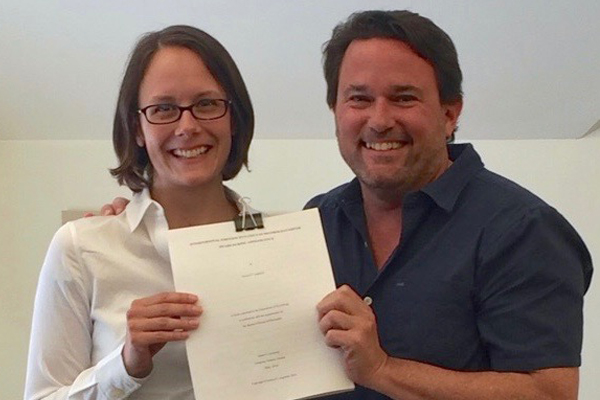Studying the mother-daughter dyad
August 24, 2016
Share
Research from Queen’s University scholars Tom Hollenstein (Psychology) and Jessica Lougheed (PhD’16) provides new insight into the emotional bonds between mothers and adolescent daughters, and the importance of “going with the flow.”
The study examined how well mother-daughter pairs were able to manage rapid transitions between emotional states and the so-called “emotional rollercoaster” of adolescence.

“This study reflects a growing need to examine how typically developing adolescents – those without a diagnosis of any major mental health issue – learn to manage their emotions,” says Dr. Lougheed, co-principal investigator on the study and now a post-doctoral researcher at Pennsylvania State University. “Being able to effectively manage emotions in different kinds of emotional contexts – called ‘emotion regulation’ – is a crucial part of healthy development.”
The researchers examined how mother-daughter pairs were able to manage transitions between emotional states. Ninety-six typically developing adolescent females and their mothers were recruited to take part in the study. Prior to the start of the test, the pairs responded individually to a questionnaire consisting of questions on relationship quality, “internalizing” of symptoms such as anxiety and depression, and demographics.
The pairs then answered a questionnaire on times when they felt happy, worried, proud, frustrated, and grateful toward each other – alternating between positive and negative emotions. Afterwards, the pairs then had a series of three-minute conversations about those emotional experiences. The videotaped sessions were played back and coded based on the emotions mothers and daughters expressed during the conversations.
As expected, pairs with low flexibility – those who displayed difficulty transitioning from one state to another – reported lower relationship quality and higher levels of maternal symptoms. Those who showed moderate levels of flexibility showed higher relationship quality and lower maternal symptoms. However, those with the highest degree of flexibility showed no associations with relationship quality or symptoms – suggesting that a moderate degree of flexibility is optimal for a strong and healthy relationship.
“We have speculated, but never tested the hypothesis, that flexibility is sort of an inverted-U function in terms that a certain amount is just right, but too much and you become disorganized and leaning towards a lack of coherence."
– Tom Hollenstein, co-principal investigator on the study and Dr. Lougheed's dissertation supervisor.
In addition, the study found that the degree of flexibility demonstrated was consistently related to the mothers’ depression and anxiety symptoms, though not with the symptoms reported by their daughters. Dr. Lougheed states this finding is a good reminder that adolescence is not just a time of development for youth, but a developmental transition for parents as well.
“The adolescent developmental period is an important transition for parents and adolescents alike,” says Dr. Lougheed. “Generally speaking, parents and teens who are able to ‘go with the flow’ of new emotional experiences in their relationship will likely be show better well-being in other ways as well.”
The full study, titled Socioemotional Flexibility in Mother-Daughter Dyads: Riding the Emotional Rollercoaster across Positive and Negative Contexts was published in the journal Emotion.